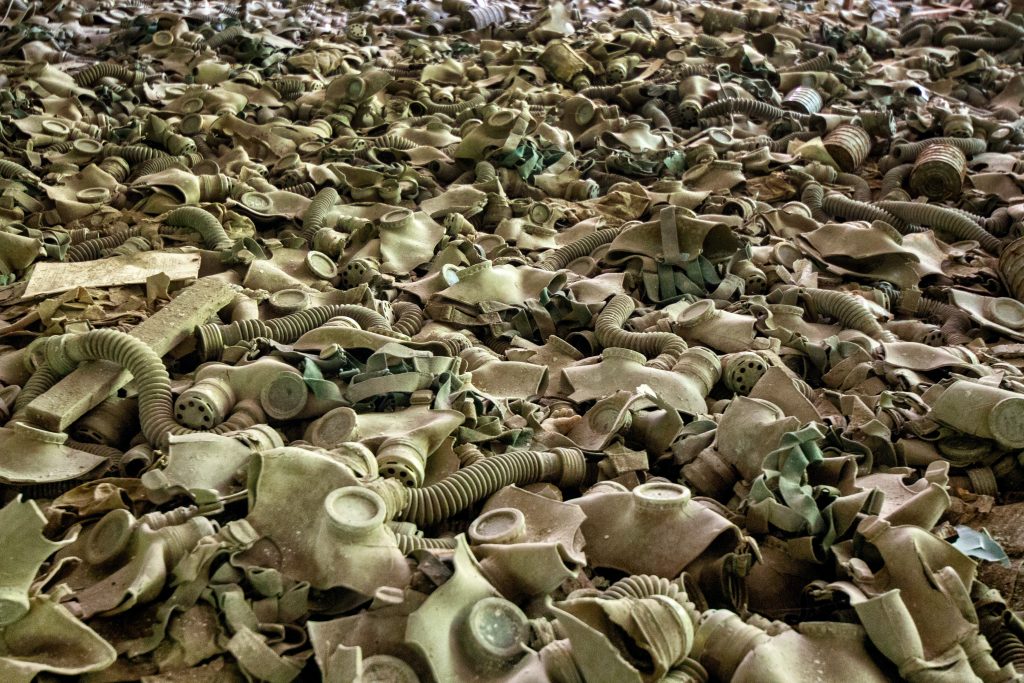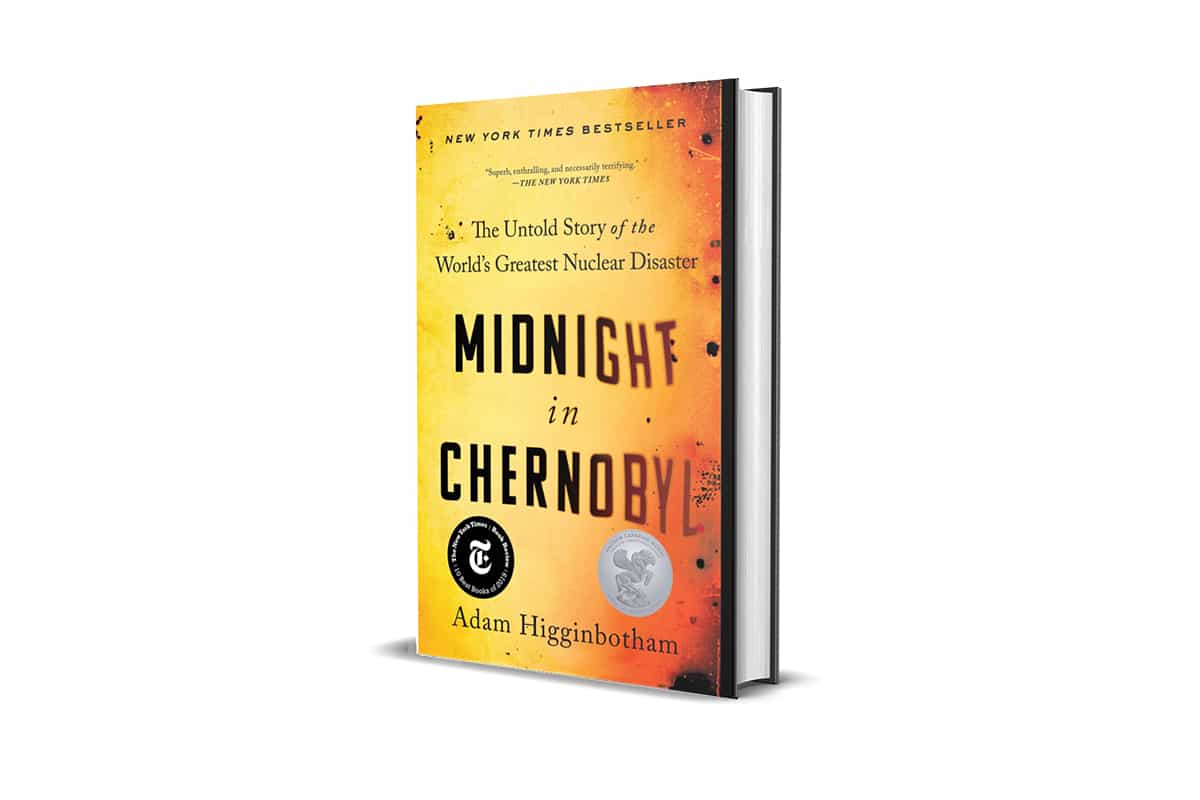Genre: History
By
Paperback | 560 pp. | Simon & Schuster | 12/02/2019 | 1st Edition
Buy on Amazon
Midnight in Chernobyl is not a book about management. Yet, this genuinely detailed account of the horrors of the most massive nuclear energy accident in human history shows a lot of what can go wrong when purposeful organisational structures are replaced by self-preserving bureaucracy and when there is no line of sight on the mission and purpose of an organisation. It also tells how important it is to have a remediation plan for every possible scenario, including the worst-case one, and how humans can achieve a lot even when technology and science fail to deliver immediate answers. In the wake of another crisis, such as the one we live in due to the Covid-19 Pandemic, the parallels are easy to be made.
A Purposeful State
We cannot deny that the Soviet Union as a whole was a State without a Purpose. The ideology behind the Communist Revolution sits at the core of the history of that political experiment. As we sat and are up on the other side of the iron curtain, we are often biased in assuming that the oppressive state was the only thing that existed. The first chapters of the book tell the story of the origins of the Chernobyl Powerplant, including the role that science and technology had in the development of the Soviet policies. Many of the people mentioned across the book are portrayed as true believers in the Socialist utopia, and their contribution was not just due to political oppression or a forced trust in propaganda.
Yet, as we near the account of the disaster, Higginbotham observes that the plant was run like the Soviet state writ large — with individuals expected to carry out commands from the top almost automatically. “At the same time, when it came time to assess responsibility for the disaster, any collectivist fellow feeling evaporated, as the ensuing show trials insistently scapegoated a few individuals (some of them already dead) in a desperate attempt to keep a crumbling system intact.”
Chernobyl dwelled in the “grey netherworld of Soviet reality,” cutting corners, skimping on safety, deferring maintenance — whatever was “expedient” to meet goals. And then there was the technology — “capricious” and “unforgiving.”
All this placed its human operators under crushing pressure. On the fateful night shift, performing a critical test, they were further beset by interpersonal dysfunction: an overbearing supervisor with imperfect technical know-how abetted by a culture of deference; cowed underlings; a rookie at the controls; and a concatenation of poor decisions”.
I think the broader lessons are about technological hubris. In the Soviet Union, the risks of overconfidence and hubris went hand-in-hand with a culture of secrecy and dishonesty.
Adam Higginbotham, The Human Drama of Chernobyl, Bulletin of the Atomic Scientists
An example of risk management gone wrong
The book highlights three elements that were detrimental as together allowed for the accident to take place and cause the disasters we all know of:
- An organisational culture of secrecy and distrust,
- A context where cost considerations had prevalence over risk calculations, and
- A risk management organisation which was unprepared for the events unfolding.
Organisational Culture
The World Nuclear Association states their view as follows:
“The April 1986 disaster at the Chernobyl nuclear power plant in Ukraine was the product of a flawed Soviet reactor design coupled with serious mistakes made by the plant operators. It was a direct consequence of Cold War isolation and the resulting lack of any safety culture.”
It was, however, not just safety culture that was missing. You genuinely see an organisational culture in full view when it has to deal with a robust and challenging situation, such as a crisis event. What happened at Chernobyl was, of course, a crisis event of enormous international proportions.
The critical issue with the Soviet yet System is that it was built on distrust and secrecy. The book illustrates many of these aspects. The RBMK type of reactor, which is the one that exploded in Chernobyl, had some design issues. The risks of these where known, but somebody across the command chain put secrecy above all. Thus the operators of the reactor were not aware of the possible issues. Communication and decision command chains where long, therefore timeliness in operations was delicate in critical situations.
But one of the most illustrative elements of the existing Culture is the description of Viktor Brukhanov, the Plant Director, who in the aftermath of the accident refused to believe that the reactor had exploded because it was impossible. The second illustrative element is the dynamic of what led to the explosion during the day. A safety test of the plant, which was postponed due to production objectives, and was continuously delayed. It was decided to go ahead with the test very late, when. Shift change was happening, and the people that were meant to be dedicated to it were gone already. Midnight in Chernobyl spends much time to explain the dynamics of what has happened there. But it is not a question of felons and heroes. Preferably something that could have potentially happened in many other situations (and later on the Soviet Prime Minister admitted that it would have happened).
Costs versus Risks
The second organisational element that allowed this tremendous accident to happen was implicit in the way the Soviet economy was run. High level targets, decided in 10 and 5 years plans, where meant to be executed through simple centralised command and control. Execution thus became the realm of shortcuts, to ensure that targets where met, often overlooking elements like safety and risk mitigation.
The accident at Chernobyl drastically demonstrated that when certain conditions are present in high-risk activities, and things line up that allows controls to be punctured, catastrophic consequences can occur. A classic example of a Swiss Cheese Model.
Many small decisions which were often taken to manage costs, or the unavailability of a specific element to build according to specifications, or only a shortcut to save time, all contributed together to the disaster. Which brings back to Culture: also a small action that seems not to have big consequences, can become significant if put into the framework of a chain reaction of events such as the one illustrated in Midnight in Chernobyl.
Prepare for the Worse
Which brings us to a consequence that the book illustrates very well: the Soviet Union was not prepared for such an event. Ridden with overlapping responsibilities, their reaction was slow and incoherent at most. It took a while before the gravity finally emerged and led to a consistent answer. But then, no procedures were in place to serve such a scenario.
This is the principle that many organisations (especially those that need to push reliability in complex situations by design, the so-called High-Reliability Organisations) should follow as they need to prepare for scenarios that might be remote, but preparation is everything. Worst Case Scenario preparedness is vital, and cannot be exchanged for simple cost estimations upfront, especially as we consider that a few of those reactors still exist.
It is essential that emergency plans are flexible. It would be foolish to plan for another accident similar to Chernobyl without any flexibility, as the only fact that one can be sure of is that the next severe accident will be different. Emergency planners need to distil the general principles applicable to various accidents and incorporate these into a generic plan.
Chernobyl: Assessment of Radiological and Health Impact 2002 Update of Chernobyl: Ten Years On – NEA
Conclusion: a lesson from Midnight in Chernobyl

In Midnight in Chernobyl, it is clear that the what emerges is the Soviet Union’s last stand, containing all the pathologies and passion of that social experiment now lost to history: “hubris,” magical thinking, grotesque disregard for individual life, gaping inequity between the political class and the rest in a supposedly classless society, and sheer bloody-minded communal courage.
The issue is that precisely those same elements that have made the USSR vanish after such an enormous accident can happen, admittedly at a smaller scale, in any organisation. When Culture becomes too focused on the objective without considering the consequences, when the organisational model becomes purely bureaucratic, when the execution is monitored through oppressive monitoring, and secrecy becomes a value, we are merely looking at the elements that allowed this issue to happen. Think about it: we all think we can recognise the details of a negative and corrupted culture easily. Yet many of us live elements of it in their organisations, without even noticing, too concentrated on the execution of the tasks assigned.
Nobody learned the lessons that could be learned from Chernobyl.
Adam Higginbotham, The Human Drama of Chernobyl, Bulletin of the Atomic Scientists
This is the most worrying lesson from Midnight in Chernobyl. As the author notes at the end off the book, the accident of Fukushima in Japan, despite having different nature, still had some elements to share. When activities had to be performed in the damaged reactor, Japan realised it did not have the technology to use, and so the army was mobilised. Yes, we can consider theme heroes, but the reality is that this simply illustrates the failure of the organisation that should have cared for the lives of these people.
We are seeing this today. As the Covid-19 pandemics unfolds, we have seen yet again all the elements at play that led to the same disaster. Secrecy and Mistrust (in China, but also many western countries), denial of the scenario and consequently the absence of a contingency plan (well most countries had an idea, but did not have the required quantities of masks and ventilators because they all thought it would not happen).
Let’s however, not think that these issues happen only at the governmental level. How many firms were ready for this? How many did have a plan? How many had in place a culture able to support the current remote work needs? How many had kept cash at hand to survive six months of an economic block? Building Resilience in organisations is not just about hoping the heroes will intervene at the end. It is about intentional design for good and bad times.
To conclude, Midnight in Chernobyl is an excellent book on many accounts, particularly on what it leads to think and ponder besides the accurate accounts of what happened during those days. A great read for many of you, I’m sure.

Genre: History | Rating: 5/5
Paperback | 560 pp. | Simon & Schuster | 12/02/2019 | 1st Edition
ISBN: 9781473540828
Buy on Amazon

The book is in details arranged thoughtfully. The facts has been sequentially elaborated. Although I am midway in reading the book. The book explores every possibility that was envisaged in cooling the molten uranium dioxide from penetrating earth .In hard times the while universe gathered to find a solution to stop the chain reaction. It is semi fiction like narration but close to reality what happened in Chernobyl.The incident disclosed loopholes in safety standard in nuclear civilian uses.
The book is in details arranged thoughtfully. The facts has been sequentially elaborated. Although I am midway in reading the book. The book explores every possibility that was envisaged in cooling the molten uranium dioxide from penetrating earth .In hard times the whole universe gathered to find a solution to stop the chain reaction. It is semi fiction like narration but close to reality what happened in Chernobyl.The incident disclosed loopholes in safety standard in nuclear civilian uses.